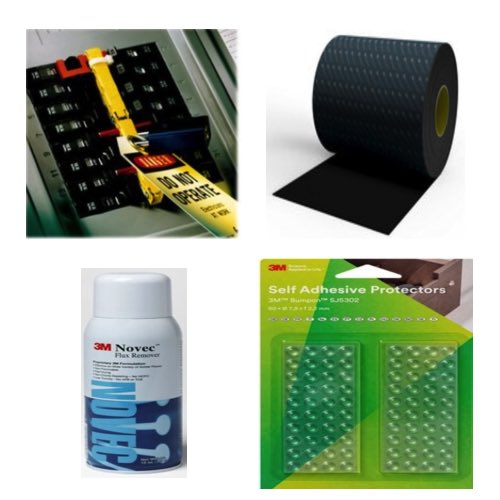Protective Products

Cushions and spacers are integral components in electrical systems, designed to prevent contact between electrical parts and manage spacing in installations. They're typically made from non-conductive materials like rubber or plastic. Their primary function is to ensure electrical components are positioned correctly and securely, providing both physical support and electrical insulation.
Electrical lockouts are safety devices used to prevent the accidental energization of electrical systems during maintenance or repair. They physically secure electrical switches or circuit breakers in an off position. These tools are essential for compliance with safety regulations and protect workers from electrical hazards. They come in various forms, including lockout tags, padlocks, and switch covers.
Carrier and cleaning solvents are used for different purposes in the maintenance of electrical equipment. Carrier solvents aid in the even application and distribution of substances like lubricants or adhesives, evaporating quickly after application. Cleaning solvents, on the other hand, are formulated to remove contaminants like grease and dirt from electrical components without causing damage. They are essential for maintaining the efficiency and reliability of electrical systems.
What is "Fail Safe"?
What is fail safe?
Fail safe is to cause a piece of machinery or other mechanism to revert to a safe condition in the event of a breakdown or malfunction. In regards to electrical equipment, this would be a state where no power exists. In other words, when the device fails, power would no longer be running to that piece of equipment.
So how is this done?
An electrical motor, for example, can be switched on and off with some kind of motor starter. This motor starter will commonly consist of a contactor, which is a normally open set of contacts capable of providing the necessary power to the motor, as well as an overload protection device. The overload is designed to monitor the power and ensure that any overcurrent event does not destroy the motor or allow the contacts on the contactor to be welded shut. Upstream of the motor starter will be some kind of circuit protection device, commonly a breaker or fuse. This device also protects against overcurrent, but offers additional protection against large voltage spikes, like a lightning strike or power surge. With all of these devices upstream of the motor, if the motor were to begin to overheat, the overload would cause the contacts on the contactor to open, switching power off to the motor. In this instance, the motor failed, but did so in a safe manner, or safe state.

